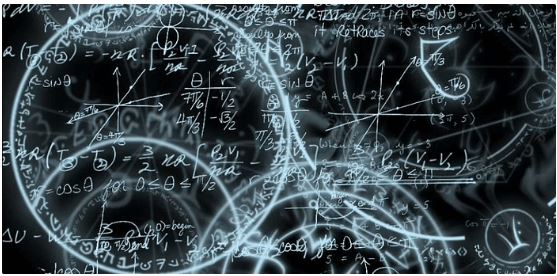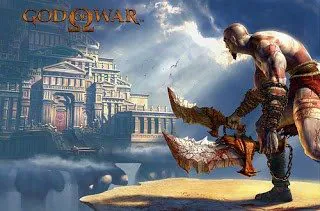Mathematics is the language God used to write the universe
——Galileo Galilei
We’re not sure who first applied mathematics to science, but the Babylonians about 3,000 years ago were probably among the first. They used mathematics to understand solar and lunar eclipses , and it would be another 2,500 years before the advent of calculus and Newtonian physics could explain these phenomena.
Black holes, the Higgs boson and gravitational waves were all predicted mathematically , highlighting the mathematical nature of the universe . Some 400 years ago, Galileo Galilei’s famous assertion that the universe was a “magnificent book” written in the language of mathematics reflected this view. This means that our universe is not just described by mathematics, but rather, it is inherently mathematical. We are all part of this vast entity based on mathematics, and this entity is part of a multiverse that is much larger than the concept of multiverses that people have been discussing lately.
Many people often confuse mathematics and arithmetic, but in fact, mathematicians explore a wider range of abstract structures than pure numbers , including various geometric shapes. To discover these shapes around you, don’t just focus on man-made shapes, such as the rectangle of a book.
Because nature itself is full of patterns , like the Fibonacci sequence – (from the third number onwards) the latter number is the sum of the previous two numbers. Starting from 0,1, the first few numbers are arranged as follows: 0,1,1,2,3,5,8,13,21,34,55,89,144
(We can also see this pattern in nature) For example, when you look at a sunflower, you will find that its seeds are distributed in a spiral, and the number of seeds follows the Fibonacci sequence .


You can discover geometric patterns and shapes by observing nature . For example, when you throw a stone and observe its trajectory, you’ll notice a beautiful, recurring arc called an inverted parabola. No matter what you throw, it will follow this trajectory. When we observe celestial bodies orbiting in space, we find another common shape – the ellipse. Interestingly, these two shapes – the parabola and the ellipse – are related to each other. The tip of an elongated ellipse closely resembles a parabola (an ellipse approaches a parabola as its eccentricity approaches 1), indicating that all these trajectories are essentially components of an ellipse .
As we explore the world around us, we notice recurring shapes and patterns in areas such as motion, gravity, and electrical currents , which we summarize as the laws of physics . Just like we use mathematics to describe the shape of an ellipse, we use mathematics to describe these laws .
Tegmark said, “Mathematical shapes and patterns reveal the elegant simplicity and beauty of nature, and these patterns have become comprehensible to our minds.” Tegmark has a strong love for mathematics, he even hangs it in his bedroom Lots of pictures of equations.
For a long time, scientists have used mathematics to describe the universe, but what if the universe was actually just mathematics ? This is exactly what Max Tegmark was thinking about.

Max Tegmark
In a talk at Bebber Lodge on January 15, Tegmark discussed the idea that if you accept that space itself and the matter of space have no properties other than mathematical properties , then “everything is mathematical” doesn’t sound right. It seems so ridiculous.” He based the talk on his book Our Mathematical Universe: My Quest for the Ultimate Nature of Reality.
In the fields of physics and cosmology, there is a speculative “theory of everything (TOE)” called the Mathematical Universe Hypothesis (MUH) or the ultimate unified theory, which was proposed by cosmologist Max Tegmark Proposed.
“You can’t do anything without math. Everything around you is math, it’s numbers.”
——Shakuntala David
Tegmark’s Mathematical Universe Hypothesis (MUH) theory states that our physical world is based on mathematical structures. This means that our universe is not just explained by mathematics , but that it is essentially mathematics – a special mathematical structure . That is, if something exists mathematically, it also exists physically. Observers, like humans, are considered self-aware parts of this mathematical structure, and in any mathematical device where such observers exist, they feel like they exist in the real physical world.
Some people say that the human brain is the most complex thing in the universe, and it is our human thinking that has led to huge leaps in understanding the world. One day, Tegmark said, scientists may even be able to use mathematics to describe consciousness.
“The brain contains infinity in limited space”
—— Carl Sagan
Tegmark emphasizes that the fusion of seemingly separate things often leads to major breakthroughs in physics , such as energy and matter, space and time, electricity and magnetism. Likewise, he believed that consciousness (the sense of self-awareness) would eventually become unified with the body (a collection of moving particles).
Tegmark says his hypothesis requires no additional details and has not been falsified by observers. Therefore, he believes that according to Occam’s razor, his theory is better than other theories of everything. He also mentioned another point of view – the Computable Universe Hypothesis (CUH), which states that physical reality is a mathematical structure defined by computational functions .
Tegmark’s Computational Universe Hypothesis (MUH) is linked to his view that the multiverse contains four levels. These four levels are ordered from low to high complexity: (Level 1) A world with different starting points , (Level 2) A world with different physical constants , (Level 3) A world with different quantum results , (Level 4) Different A world of equations or different mathematical structures .
Jürgen Schmidhuber is a German computational scientist known for his work in the field of artificial intelligence
Jürgen Schmidhuber disagrees with Tegmark’s view. He believes that Tegmark’s view that “all mathematical structures are equivalent” has no practical significance. He proposed a more qualified approach. He focuses on representations of the universe that can be described using constructive mathematics , such as computational programs. These computational programs are like digital libraries of mathematical functions, providing the basis for more mathematical discoveries.
Tegmark responded that even in string theory, no formal method has been developed to measure all physical variables in the universe, so this limitation should not be seen as a big obstacle.
More than 60 years ago, the Austrian mathematician Kurt Gödel proposed a theory that contradicted Tegmark’s view. His first incompleteness theorem dealt with the problem of mathematical axioms. This theorem said that what we accept as true in mathematics cannot be proved by mathematics itself .
For example, consider the identity axiom (X=X). We believe it’s true, but we can’t prove it mathematically. Gödel’s theorem states that all theories based on axioms are either incomplete or self-contradictory .
Theoretical physicist and mathematician Freeman Dyson believed that mathematics is endless . Even though we have solved many problems, we will still find more unresolved problems within the existing rules . While this may go against the “theory of everything” view, it does not mean that numbers are purely a product of human invention , or simply something waiting to be discovered by humans.
Some people think that the Mathematical Universe Hypothesis (MUH) is inconsistent with Gödel’s incompleteness theorem. In a discussion involving Tegmark, Piet Hut, and Mark Alford, Alford argued that the methods used by the formalists were incapable of proving that a very powerful system All theorems. His view that mathematics is “out there” is not the same thing as the view that it is based on formal systems.
Tegmark responded by proposing a new idea: Only mathematical structures that can be completely solved exist in the physical world . This idea narrows down the scope of the multiverse and potentially explains why our universe seems so simple. He also showed that even if standard physical theories are not fully solvable, the mathematics that describes our world still is.
In another response, Tegmark proposed an alternative to the Mathematical Universe Hypothesis (MUH) – the Computational Universe Hypothesis (CUH). This view only covers those mathematical structures that are simple enough and does not involve the unsolved or uncomputable theorems of Gödel’s theorems. However, Tegmark also admitted that this method faces great challenges. For example, this assumption excludes many mathematical situations and potentially uncomputable problems, and the most successful physical theory in history is not consistent with CUH.
Stoeger, Ellis and Kircher believe that in a true multiverse, different universes are completely separated from each other , and one universe does not affect another universe at all. They believe that this lack of connection makes the multiverse theory unsupported by science. Ellis was particularly critical of the Mathematical Universe Hypothesis (MUH), which he argued was almost impossible to prove except with some optimistic views.
However, Tegmark believes MUH can be proven. He believes that this hypothesis predicts that physics will reveal mathematical patterns in nature, and by assuming that we are in a specific universe in a multiverse, we can test how unique our universe is in this mathematically structured multiverse.
The Mathematical Universe Hypothesis (MUH) is based on the idea that mathematics is an objective reality , but some people, such as Jannes, believe that mathematics is to some extent a human invention. He proposed that if mathematics is really an objective reality , then other intelligent creatures, such as aliens or intelligent computers, should also be able to understand mathematics well. Brian Greene holds a similar view, arguing that a deep understanding of the universe should not rely on human concepts .
However, a variety of non-human entities, including intelligent life, can understand and apply basic mathematical concepts . At the same time, there are some interesting examples of mathematical concepts in animals. For example, trained gorillas can do some symbolic addition limited to basic arithmetic . This raises the question: Does intelligence beyond humans exist? Can you understand advanced mathematics? So far we have no confirmation. Positivists believe that mathematics is evolving and has no fixed structure.
Tegmark responded that mathematical structures are strictly defined, and mathematics outside of humans just looks different because we are gradually uncovering a consistent and unified mathematical picture. He mentioned in his 2014 book about MUH that we did not invent the language of mathematics, we only discovered its structure.
Don Page believes that there can only be one basic world. If mathematics can describe all possible worlds, then there must be a unique mathematical structure that defines “Reality.” He considers it illogical that all the previously mentioned mathematical structures coexist at level 4.
Tegmark responded that Page’s view was not entirely inconsistent with Level 4. He explained that many mathematical structures can be broken down into independent parts, but these parts can then be unified. In the simpler case, even within a mathematical structure, there are elements that appear to be separable but are actually interrelated .
“Mathematics is the language of the universe. So the more formulas you know, the more you can communicate with the universe.”
——Nyle deGrasse Tyson
For more such interesting article like this, app/softwares, games, Gadget Reviews, comparisons, troubleshooting guides, listicles, and tips & tricks related to Windows, Android, iOS, and macOS, follow us on Google News, Facebook, Instagram, Twitter, YouTube, and Pinterest.

























